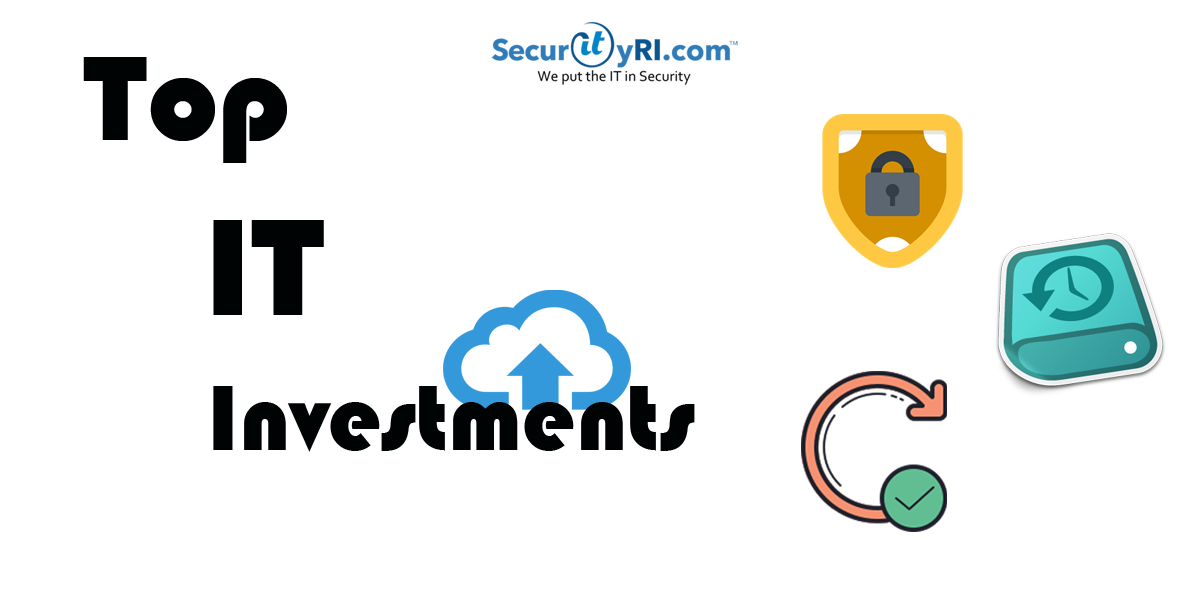The first questions are:
What is standing between your business’s data and hackers? What’s your plan when your on-site server fails?
When you withhold on technology and IT solutions for your business, the answers to these two questions are simple:
1) There is nothing standing between your business’s sensitive data and people who want to take advantage of that data
2) There is no redundancy plan
It happens way too often, and businesses may not focus on their technology infrastructure or security.
Avoiding security can cost them dearly in time, money, resources and clients. When it comes to investing in IT, here are three things you never want to under-invest on.
SECURITY.
Far too many businesses – from small to large, under-invest in IT security. We touch on this topic because we see it a lot. These are business owners and managers who fall into the mindset of “It won’t happen to me.” This is a dangerous line of thinking.
For small businesses, a data breach can be devastating. Not only is data compromised and potentially copied or stolen, but your clients will also immediately question whether they should trust you. There’s a good chance they end up taking their business elsewhere.
When IT security isn’t a priority and you invest in the cheapest option available, it’s like asking hackers to let themselves in. One study by the security firm Imperva found that over 50% of all Internet traffic is made by bots. Many of these bots are looking for security holes. They test websites and networks, looking for entry. If they find their way in, they can do some serious damage.
Investing in solid IT security – with an experienced team of IT specialists behind that security – can prevent that damage from ever happening in the first place. It’s not only about protecting your business assets but also protecting your clients and giving them another reason why they should trust you.
BACKUPS.
You keep all of your data on-site with no backups. It’s all stored in one central location and that’s it. This is a recipe for disaster if you get hacked, but it can be an even bigger disaster if a hard disk or server fails.
Suddenly, you find yourself unable to access client information, invoices, phone numbers – you name it. Having a backup on- site or in the cloud means everything you do has an extra layer of protection. A backup gives you the ability to restore your data should the worst-case scenario occur.
It’s even better to go a step further and have a backup for the backup. Have one on-site solution and one cloud-based solution. Even if the backup to the backup is as simple as a 4TB hard drive from Amazon, it has the potential to save your business should anything go wrong.
Of course, you also need a system in place to make sure data is being regularly and accurately updated.
Another mistake business make is buying a backup or backup service, but not making the best use out of it. For example, they simply never bother to set it up. Or it is set up but isn’t configured correctly and is not backing up data as intended – or is backing up data too infrequently to be useful.
UPDATES.
How old is your technology? Think about the hardware you’re running – and the software on that hardware. Letting your technology fall behind the times, is not good. Not only are you opening yourself up to security vulnerabilities, but you may also be operating on technology that’s no longer supported by the developers.
If the developers are no longer publishing updates or supporting the software, this is a huge security red flag that you need to update. On top of that, should you or an employee need to troubleshoot a piece of unsupported software, you may find yourself going up against walls. There might be no one to call, and if a Google search doesn’t help, you may be out of luck.
The potential headaches don’t end there. If you’re running unsupported software on shiny, new hardware, you may be voiding the warranty of that hardware (always check your warranties and the fine print of any hardware you buy).
Alternatively, if you’re trying to run brand-new software on old hardware, chances are you’re going to run into compatibility issues. That wonderful piece of software might not work, or work the way you expected it to, all because you didn’t want to update your old hardware.
Sometimes, upfront – you cannot see the security investment working to your advantage. Although, being prepared will save much more money in the long run and reduce the worry of something happening to your business.


